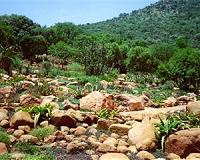| . |  |
. |
Ottawa (AFP) Feb 27, 2011 Demand for water in agriculture and energy production could spike in the coming decades while catastrophic floods and droughts strike more often, a water conference in Canada is to hear this week. "At unpredictable times, too much water will arrive in some places and too little in others," said Zafar Adeel, chair of UN Water which coordinates water-related efforts of 28 United Nations organizations and agencies. Within a generation, water demand in many countries is forecast to exceed supply by an estimated 40 percent. In other parts of the world prone to flooding, catastrophic floods normally expected once a century could occur every 20 years instead. Meanwhile, spending on technologies and services to discover, manage, filter, disinfect and desalinate water, improve infrastructure and distribution, mitigate flood damage and reduce water consumption by households, industry and agriculture is expected to rise to a trillion dollars annually by 2020. Some 300 scientists, policy-makers and economists will release these and other research findings as well as proven new tools, ideas and best practices for optimizing water management at a Canadian Water Network international conference in Ottawa. The event kicks off on February 28 and runs through March 3. Conference speaker Hans Schreier of the University of British Columbia in Vancouver will present research buttressing the need for flood-prone areas to brace for more frequent disasters. He pointed to Canadian insurance data showing claims resulting from extreme weather increased 20-fold in the past 30 years and flood-related claims now exceeding fire and wind insurance claims every year. Schreier called for improved road and street designs to minimize rainwater runoff. "Until now, all we've ever done in urban environments is to drain everything into rivers and lakes," he told AFP. But curbs, drains and impermeable surfaces could be replaced where possible with grassy shoulder depressions that collect and absorb rainwater while directing excess runoff into constructed wetlands or storm water retention ponds. This would mitigate flood damage, but also polluted runoff normally drained via pipes into lakes and rivers would be instead filtered and cleaned as it sinks through the ground, helping compensate the extensive loss of wetlands to development. Other low-cost innovations might include home driveway designs and materials that allow most precipitation to be absorbed instead of running onto streets and roads, he said. Another topic to be discussed at the conference is the impact of water shortages on businesses that rely on "virtual water" or the amount of water used in production of items. A desktop computer, for example, requires 1.5 tons (1,500 liters) of water; a pair of denim jeans up to 6 tons; a kilogram of wheat 1 ton; a kilo of chicken 3 to 4 tons; a kilo of beef 15 to 30 tons. Nicholas Parker, chairman of the Cleantech Group, said: "What people don't often realize is how much water there is in everything we make and buy, from t-shirts to wine." One proposal is to list water used on product package labels to inform consumers and encourage conservation, said Adeel, noting that annual global trade in "virtual water" now exceeds 800 billion tons, the equivalent of 10 Nile Rivers. As developing countries gain wealth, their citizens' demands for food and energy, which both require a lot of water to produce, will skyrocket, Adeel warned. "We have to be prepared for the security challenges that will arise from this," he said. Policy innovations to be discussed include helping farmers reuse water or tap into municipal waste water to "get a lot more bang out of your buck for the same volume of water." Agriculture is the biggest water user by far at 71 percent worldwide. Similarly, coupling industries so that runoff from one plant can be used as an input for another would go a long way to reduce shortages, Adeel said. On the social front, he said it is important to get local entrepreneurs engaged. He pointed to India where an estimated 500 million people have cell phones but only 350 million have access to toilets. "That says there is something in their marketing approach that the cell phone companies have got right. We just need to duplicate that (business acumen) to bring clean water and sanitation to all," he said.
Share This Article With Planet Earth
Related Links Water News - Science, Technology and Politics
 Oldest Water On Earth
Oldest Water On EarthWashington DC (SPX) Feb 24, 2011 New evidence bolsters the notion that deep saline groundwaters in South Africa's Witwatersrand Basin may have remained isolated for many thousands, perhaps even millions, of years. The study, recently accepted for publication in Chemical Geology, found the noble gas neon dissolved in water in three-kilometre deep crevices. The unusual neon profile, along with the high salinities and ... read more |
|
| The content herein, unless otherwise known to be public domain, are Copyright 1995-2010 - SpaceDaily. AFP and UPI Wire Stories are copyright Agence France-Presse and United Press International. ESA Portal Reports are copyright European Space Agency. All NASA sourced material is public domain. Additional copyrights may apply in whole or part to other bona fide parties. Advertising does not imply endorsement,agreement or approval of any opinions, statements or information provided by SpaceDaily on any Web page published or hosted by SpaceDaily. Privacy Statement |